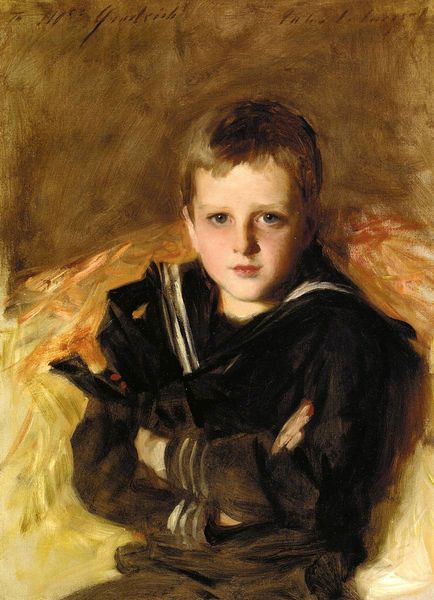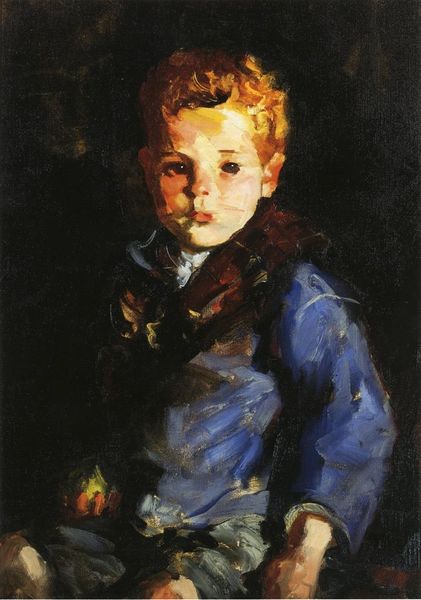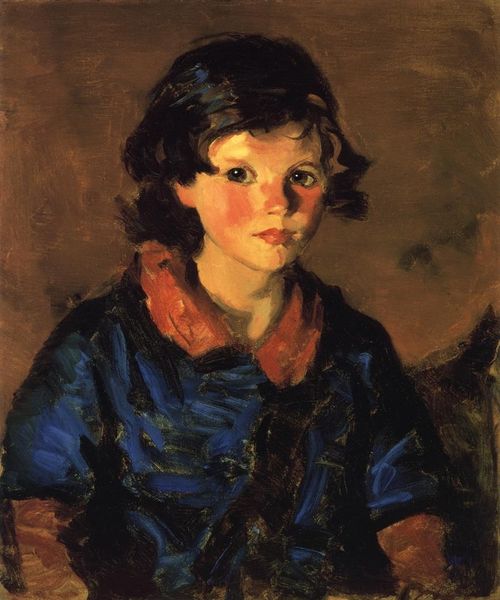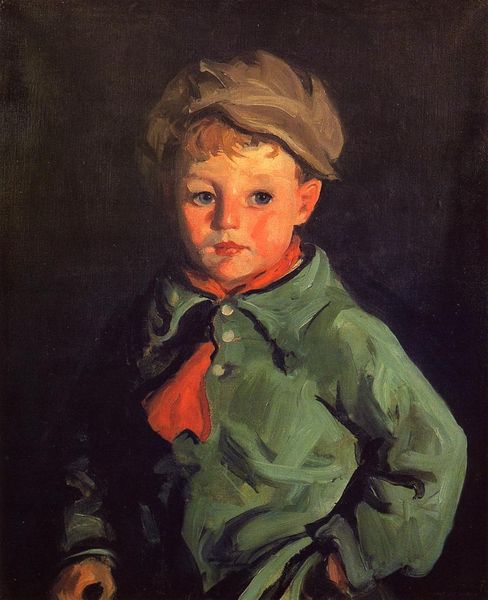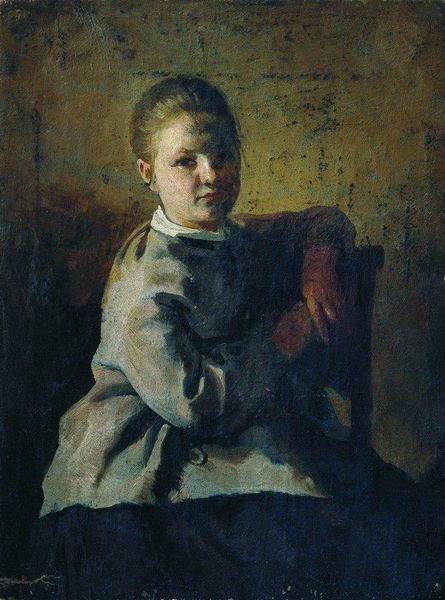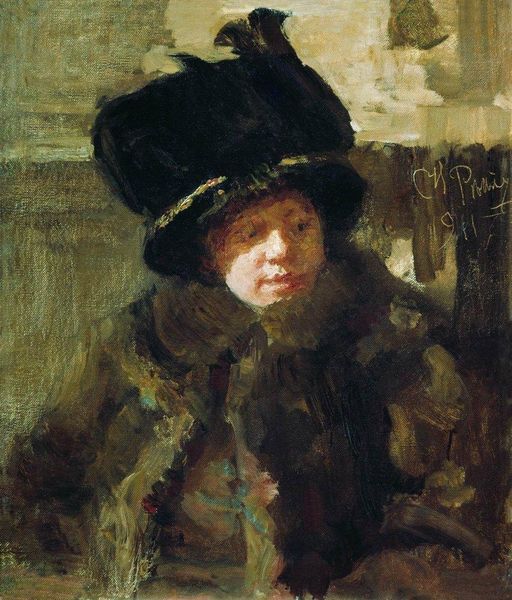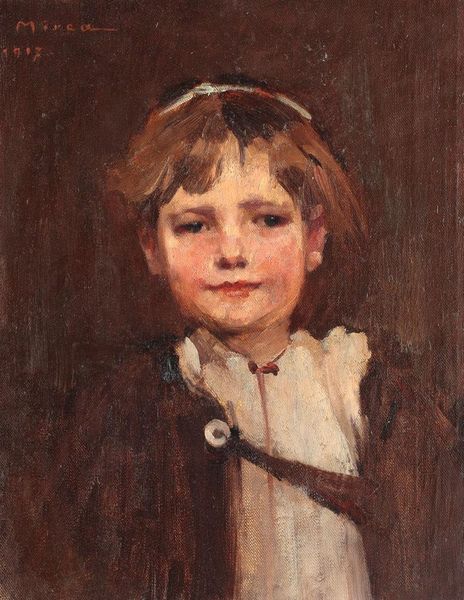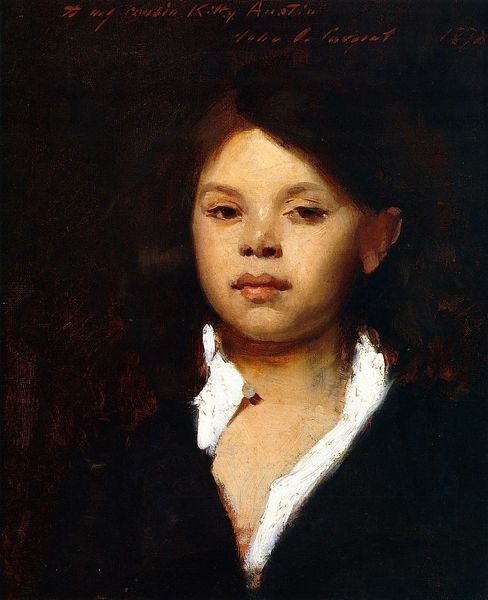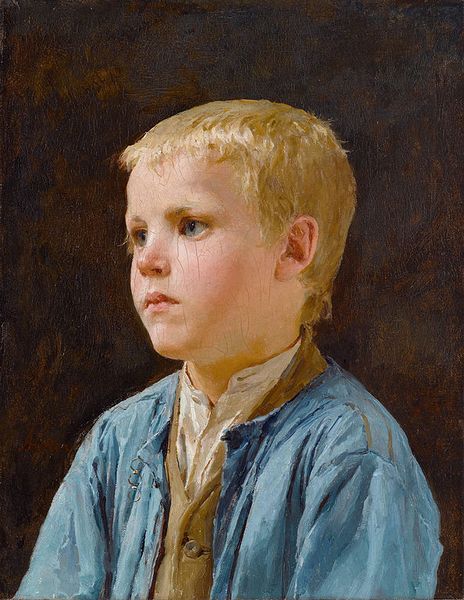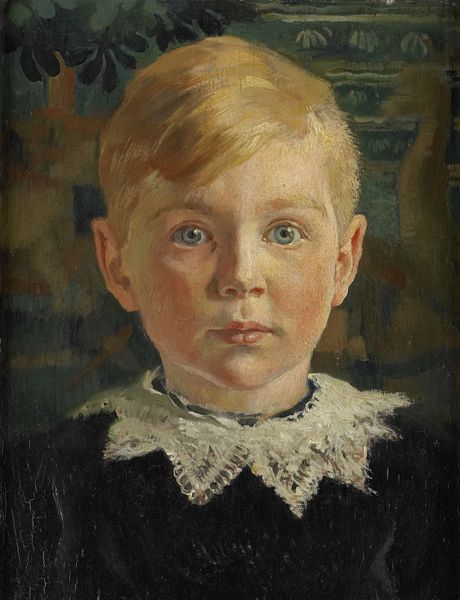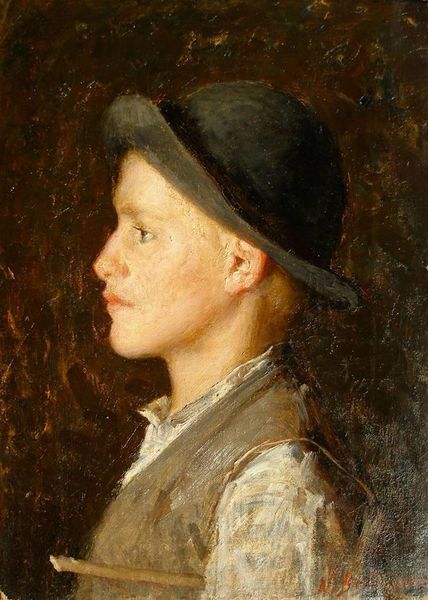
painting, oil-paint
#
portrait
#
portrait
#
painting
#
impressionism
#
oil-paint
#
figuration
#
realism
Copyright: Public domain
Curator: Before us hangs "Little Dutch Girl," a painting realized in oil paint by Robert Henri. There's a sense of immediacy here, wouldn't you agree? Editor: Absolutely. The rapid, expressive brushstrokes lend it a poignant vulnerability. I wonder what societal narratives it seeks to perpetuate? Is it idealizing a naive and pure conception of childhood? Curator: Well, the early 20th century, the probable time this portrait was created, saw an increased fascination with portraying everyday life. Henri was a central figure in the Ashcan School movement. The social context is key here. They moved away from academic traditions and embraced more gritty subjects. Editor: Yes, but considering Henri’s influences like Manet, there's still an element of constructing identity, here. The clothing seems more costume-like, doesn't it? Perhaps it touches on themes of cultural assimilation and performance, too? And there's this gaze—direct yet ambiguous. Is she asserting agency, or is it more complex? Curator: Indeed. The sitter's gaze engages the viewer directly, which speaks to Henri's commitment to capturing genuine human presence. The brushwork is rather spontaneous; that was a way for Henri to get past any artistic conceits and reveal more of the subject. Henri wanted to capture an authentic individual, without embellishment. Editor: The framing is quite traditional though, placing her in the conventional form of a classic sitter. While he embraced new techniques, I am not sure if that was translated to challenge the social structures this piece inhabits. Looking closely at her gaze and flushed cheeks, I think of similar images produced for marketing at that time. What if, beyond capturing just individuality, there is also a nod to the commerce of portraits? Curator: That's certainly a pertinent perspective! I wonder if future studies of similar portraits might help in our understanding of these connections. The interplay between artistic intent and its social implications opens rich avenues for exploration. Editor: This has encouraged me to keep thinking beyond conventional notions of artist intention, so to engage the politics behind what, how, and when to paint a child like this is presented as innocent, but charged with societal frameworks of this time.
Comments
No comments
Be the first to comment and join the conversation on the ultimate creative platform.
